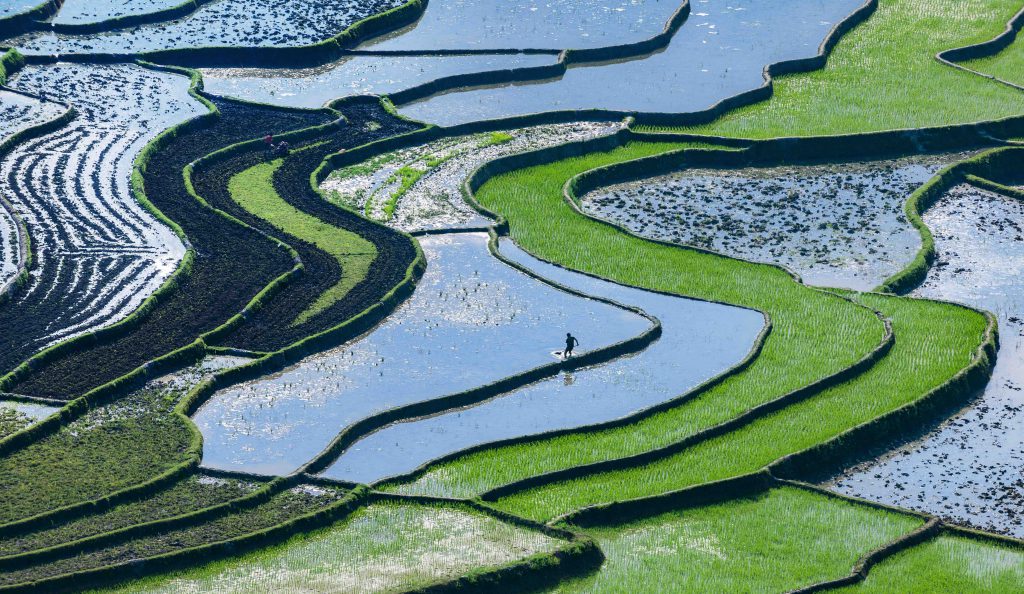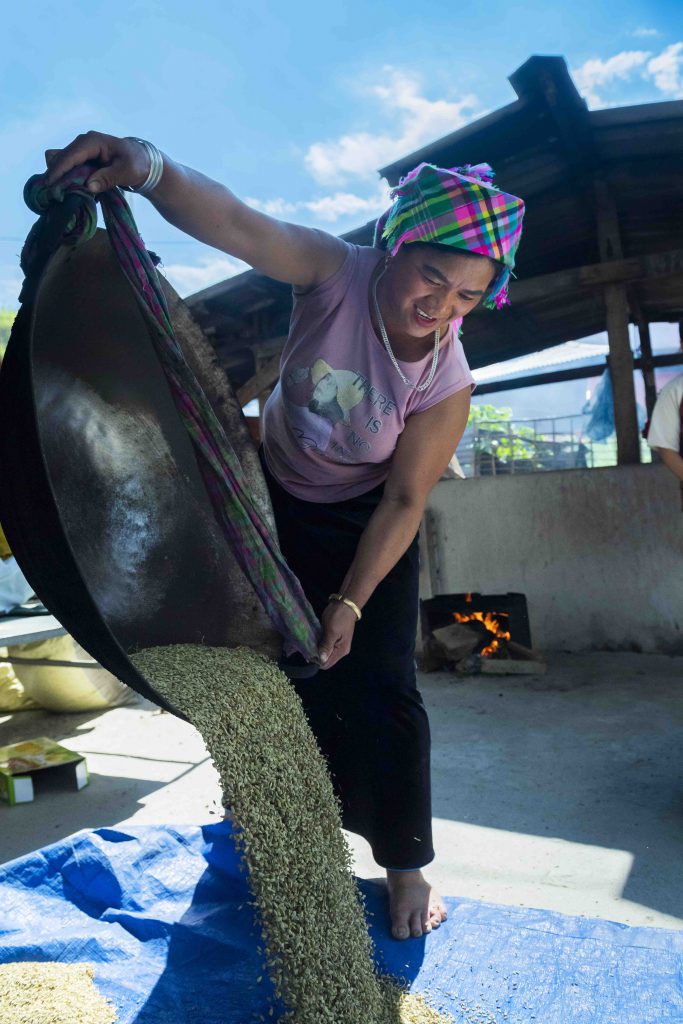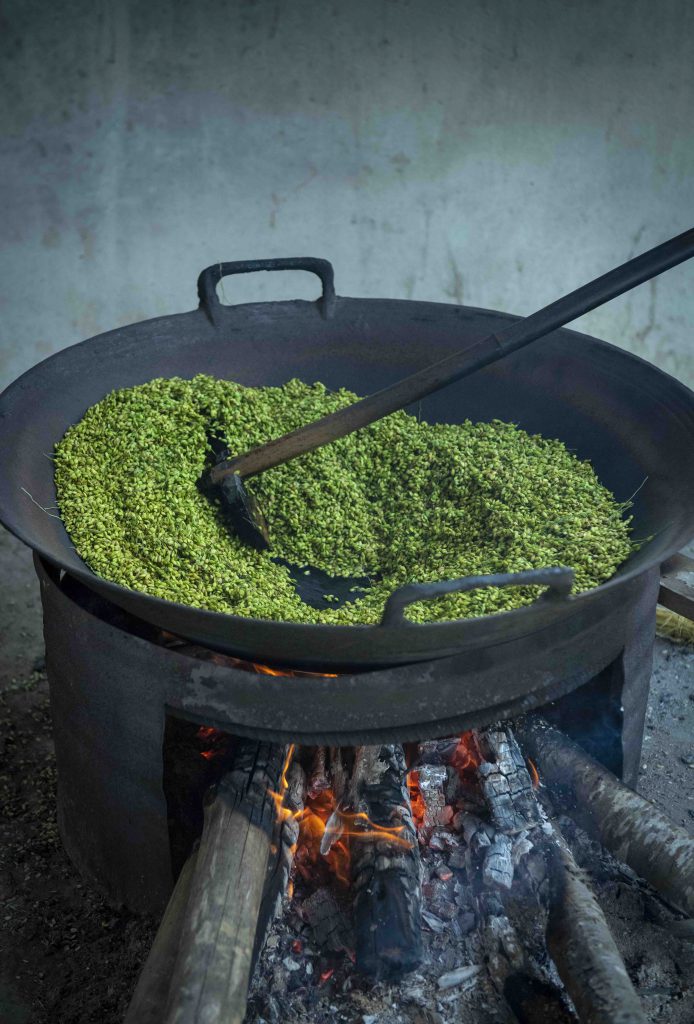Story: Huong Quynh
Photos: Amachan
Vietnamese people have long associated Hanoi’s autumn with cốm—young green sticky rice flakes—from Vong village, located in Dich Vong Hau Ward in Hanoi.

However, this autumn, if you welcome the golden season in the Northern Highlands, follow the sounds of pestles pounding cốm in the villages to discover a delightful snack brimming with rustic emotions from the fields and mountains.
Throughout the Northwest and Northeast, wherever there is new sticky rice, the locals are busy harvesting, winnowing, and rhythmically pounding the green kernels to produce “green pearls” that carry the fragrance of the countryside and the autumn hills.
The route to Yen Bai province always captivates visitors during the golden season, especially when passing through Tu Le commune in Van Chan district. This beautifully named town lies nestled in a valley between three high mountains: Khau Song, Khau Pha, and Khau Than. The locals have long adapted to the steep terrain and cultivate rice on terraced fields. Among the various types of rice grown in Tu Le, the traditional sticky rice is ranked among the best in Vietnam, known for its aroma, delicious taste, and richness. Only planted once a year, this rice creates a famous specialty called “cốm Tu Le”. Naturally, good sticky rice yields good young sticky rice flakes. From mid-August to mid-October, when the locals start harvesting sticky rice, the “green sticky rice kilns” are busy in every village.

We didn’t have to go far, spotting a “Cốm Tu Le” sign on a house along the town’s main road, where we stopped to learn about their production process. The local ethnic Thai people are very hospitable, always greeting visitors with smiles. They explained that the rice chosen for young sticky rice snacks must be harvested at dawn when the grains are still soaked in dew. The heavy ears of rice should have plump, firm grains covered in a golden-blue husk, with a bit of milk at the tip. The rice is brought home for preliminary processing: threshing, winnowing, rinsing with clean water, and roasting in an iron pan.
The roasting is the most crucial step as the cook must control the heat, manage the timing, and constantly stir the grains so that they gradually shed their husks. The cooked grains are spread out to cool and pounded in a mortar. The rustic mortars and pestles fascinate visitors from the lowlands, who eagerly ask to try them out. The mortar is made of stone, and the pestle is wooden, operated by foot via a horizontal beam. One person steps on the beam to pound the rice in the stone mortar, while another stirs the rice to ensure it’s evenly pounded. This rhythmic process continues until all of the husks are removed. The round, flat grains are sifted one last time before being wrapped in fresh green dong leaves.
Visitors are delighted to sample the warm, fragrant, and soft flakes of cốm straight from the kiln. Without a word, everyone quickly buys some, fearing this delicious treat might run out. The locals earn extra income with their famous cốm Tu Le, which inspires them to expand their sticky rice cultivation and production areas. For the people of Tu Le, making green sticky rice flakes is not just a traditional craft but a way to improve their lives.

The golden autumn, the harvest season, is also the festival season in Yen Bai province in general and Tu Le commune in particular. At this time the local Thai people hold their New Rice Celebration Festival to thank their ancestors and the heavens for favorable weather and abundant crops. During this ceremony, a shaman represents the family and offers tributes to the gods of the land, water, forest, rice, etc. Traditional Thai dishes made from meat, fish, and forest bamboo shoots are included, and new green sticky rice cakes are essential.
After the ceremony, the festival begins, with locals eagerly joining and cheering on contests to make green sticky rice flakes. The contestants, mainly young men and women, perform the steps of making cốm, producing batches of fragrant “green pearls” that contain the essence of the earth and human skill. No wonder this fragrant golden season always stirs excitement in people’s hearts in Tu Le!










